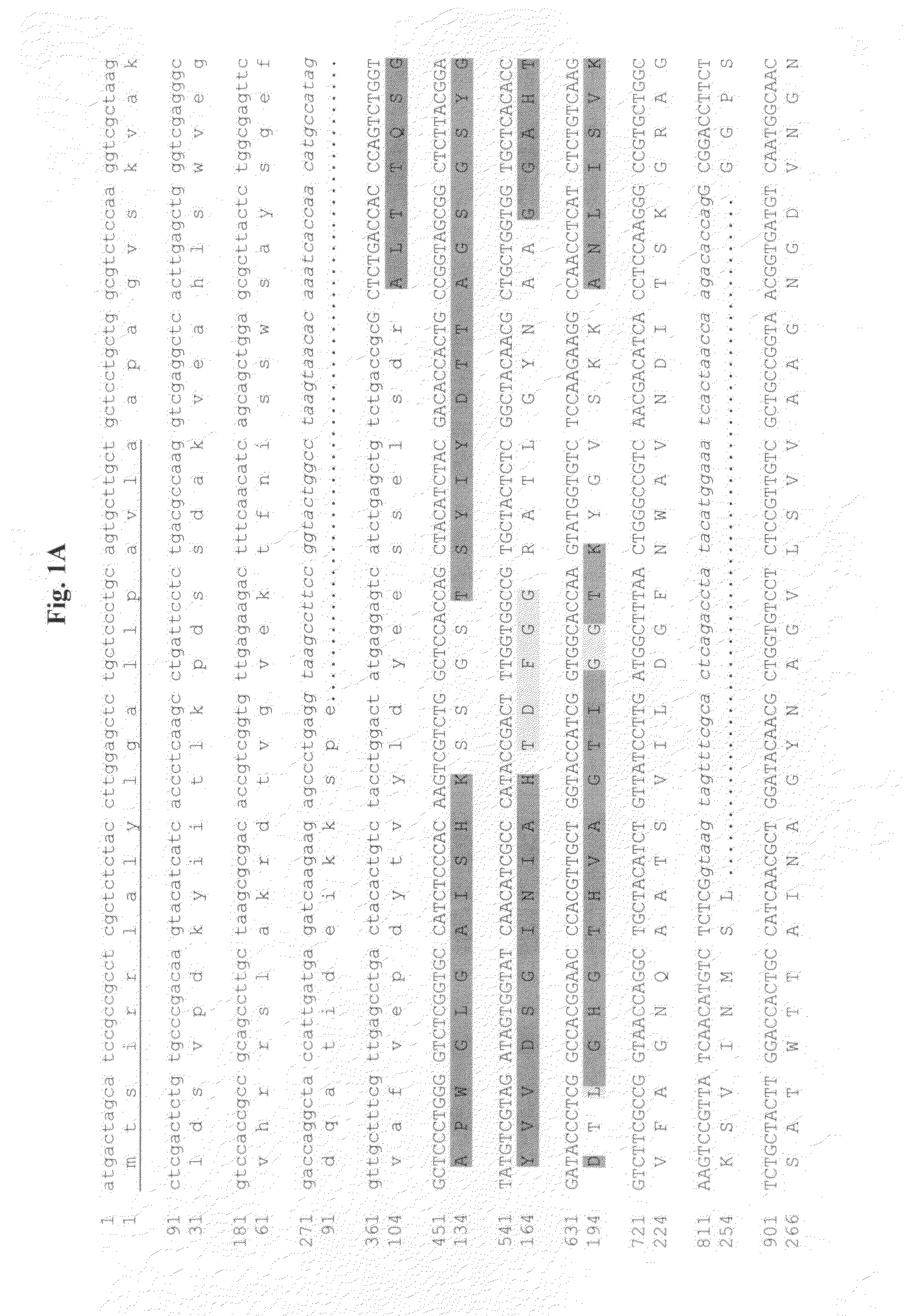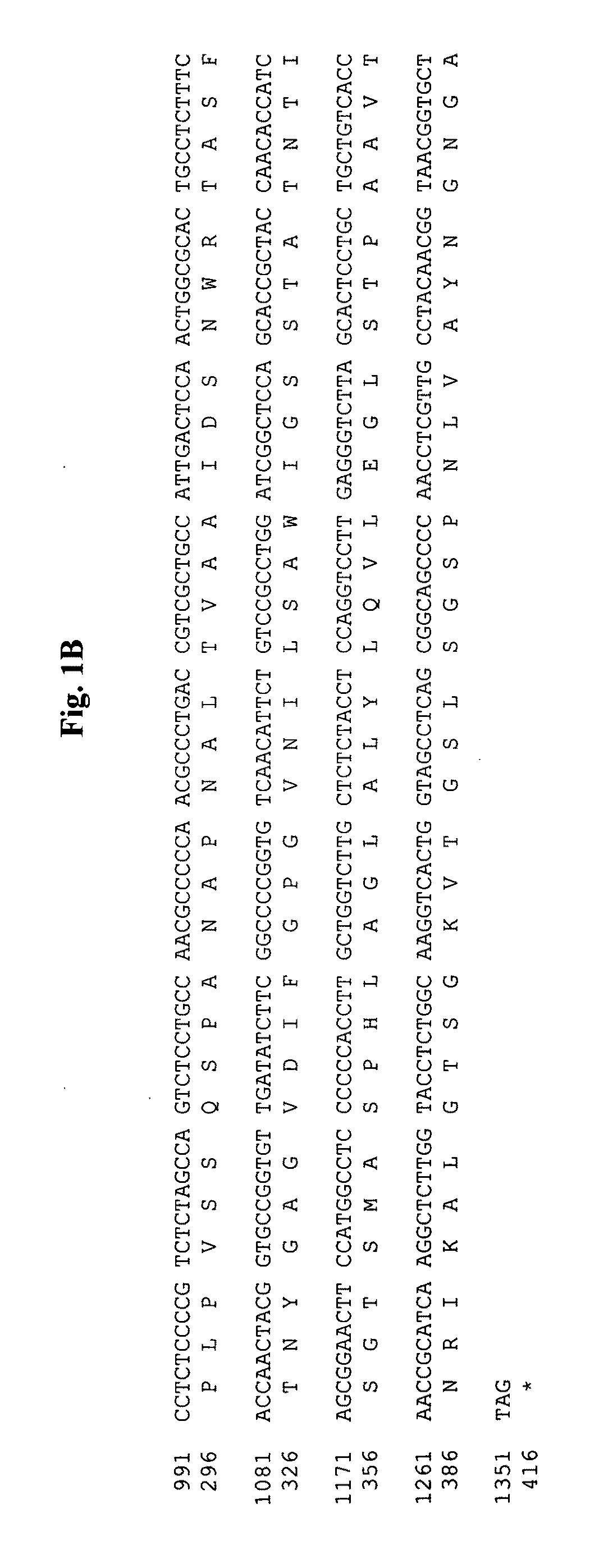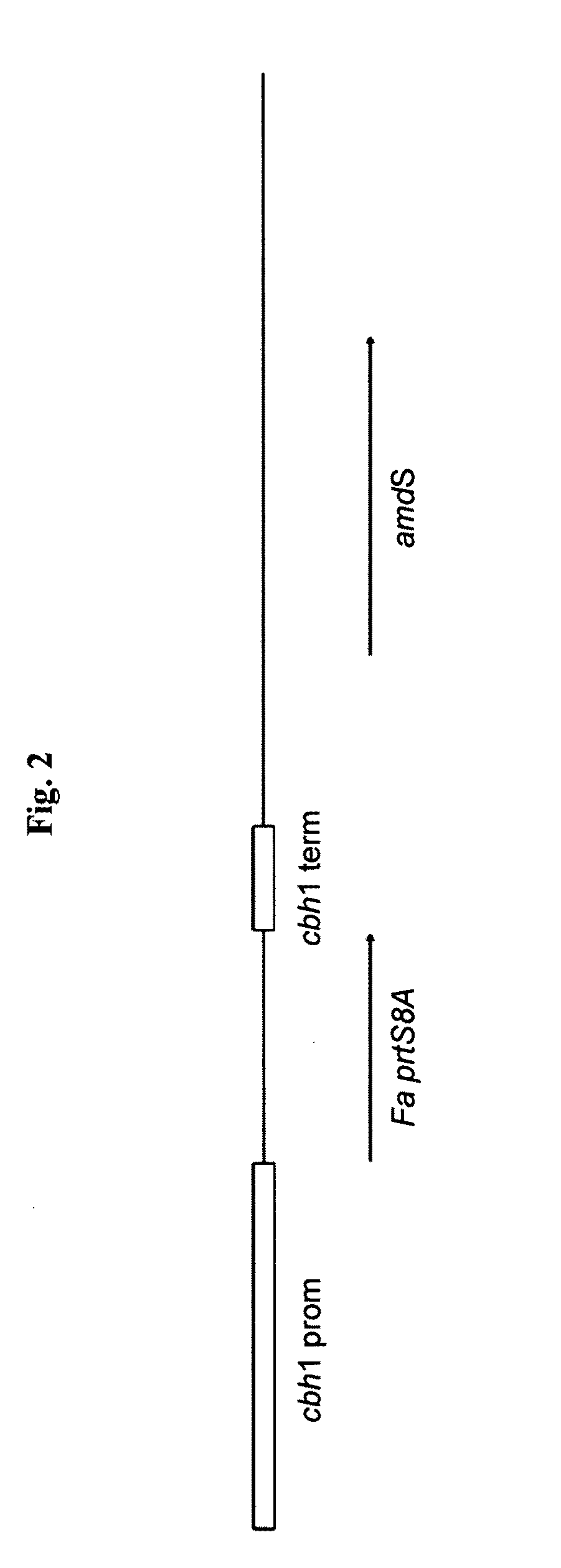Fungal serine protease and use thereof
a serine protease and enzyme technology, applied in the field of serine protease enzymes of serine proteins, to achieve the effects of broad substrate specificity, broad temperature optimum, and energy saving
- Summary
- Abstract
- Description
- Claims
- Application Information
AI Technical Summary
Benefits of technology
Problems solved by technology
Method used
Image
Examples
example 1
Production and Purification of the Fusarium acuminatum RF7182 Protease
[0210](a) Cultivation of Fusarium acuminatum RF7182 Protease
[0211]Fungal strain originally named as TUB F-2008 was isolated from a soil sample as a filamentous fungus growing on alkaline (pH 8.5) agarose plate. It produced protease activity, according to hydrolysis of casein and haemoglobin included in the agar plate. As the plate cultivations were performed at 8-10° C. this result suggested that TUB F-2008 produces a protease or proteases acting at cold temperatures. TUB F-2008 was identified as Fusarium acuminatum Ellis & Everh (identified by Arthur de Cock at Identification Services, Centralbureau Voor Schimmelcultures, P.O. Box 85167, 3508 AD Utrecht, The Netherlands) and was renamed as RF7182. The F. acuminatum RF7182 was grown, maintained and sporulated on Potato Dextrose (PD) agar (Difco) at +4° C. For enzyme production spores from RF7182 slant were inoculated into a culture medium which contained: 30 g / l C...
example 2
N-Terminal and Internal Amino Acid Sequencing of the Purified Fusarium acuminatum RF7182 Protease
[0216]For determination of internal sequences, the Coomassie Brilliant Blue stained band was cut out of the polyacrylamide gel and “in-gel” digested essentially as described by Shevchenko et al. (1996). Proteins were reduced with dithiothreitol and alkylated with iodoacetamide before digestion with trypsin (Sequencing Grade Modified Trypsin, V5111, Promega).
[0217]Electrospray ionization quadrupole time-of-flight tandem mass spectra for de novo sequencing were generated using a Q-TOF instrument (Micromass, Manchester, UK) connected to an Ultimate nano liquid chromatograph (LC-Packings, The Netherlands) essentially as described previously (Poutanen et al., 2001) but using a 150 μm×1.0 mm trapping column (3 μm, 120 Å, #222403, SGE Ltd UK) for peptide preconcentration.
[0218]For N-terminal sequence analysis SDS-PAGE / separated proteins were transferred by electroblotting into a polyvinylidine ...
example 3
Cloning of the Fusarium acuminatum RF7182 Gene Encoding Fa_RF7182 Protein
[0220](a) Isolation of DNA and Molecular Biology Methods Used
[0221]Standard molecular biology methods were used in the isolation and enzyme treatments of DNA (e.g. isolation of plasmid DNA, digestion of DNA to produce DNA fragments), in E. coli transformations, sequencing etc. The basic methods used were either as described by the enzyme, reagent or kit manufacturer or as described in the standard molecular biology handbooks, e.g. Sambrook and Russell (2001). Isolation of genomic DNA from F. acuminatum RF7182 was done as described in detail by Raeder and Broda (1985).
[0222](b) Primers for Probe Preparation
[0223]The probe for cloning the gene encoding the Fa_RF7182 protein was amplified by PCR. Degenerate sense oligonucleotides were planned basing on the amino acid sequences of the peptides obtained from the purified RF7182 (Table 1) and antisense oligonuclotides using a chosen consensus area from different publ...
PUM
| Property | Measurement | Unit |
|---|---|---|
| molecular mass | aaaaa | aaaaa |
| molecular mass | aaaaa | aaaaa |
| temperature | aaaaa | aaaaa |
Abstract
Description
Claims
Application Information
 Login to View More
Login to View More - R&D
- Intellectual Property
- Life Sciences
- Materials
- Tech Scout
- Unparalleled Data Quality
- Higher Quality Content
- 60% Fewer Hallucinations
Browse by: Latest US Patents, China's latest patents, Technical Efficacy Thesaurus, Application Domain, Technology Topic, Popular Technical Reports.
© 2025 PatSnap. All rights reserved.Legal|Privacy policy|Modern Slavery Act Transparency Statement|Sitemap|About US| Contact US: help@patsnap.com



